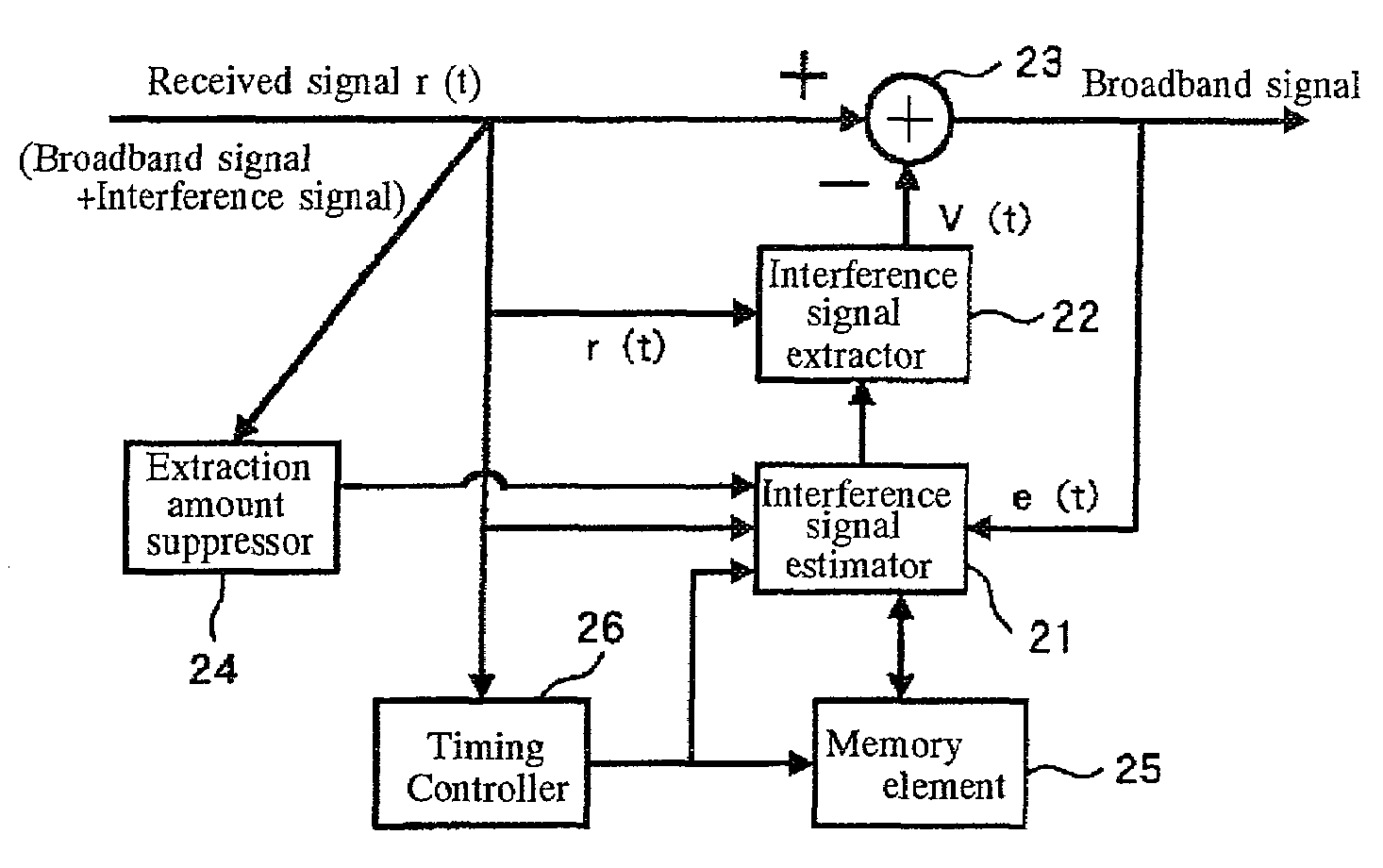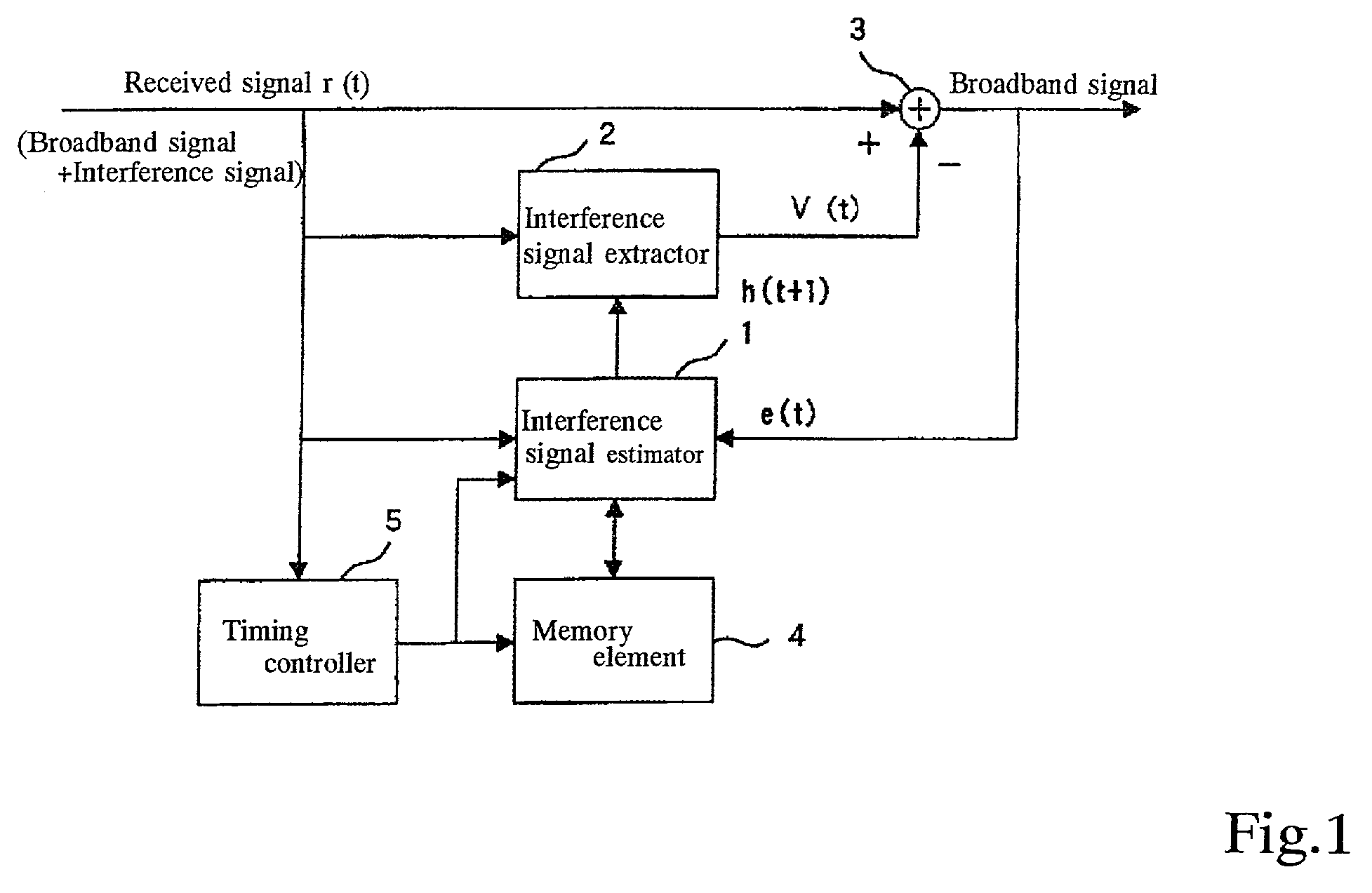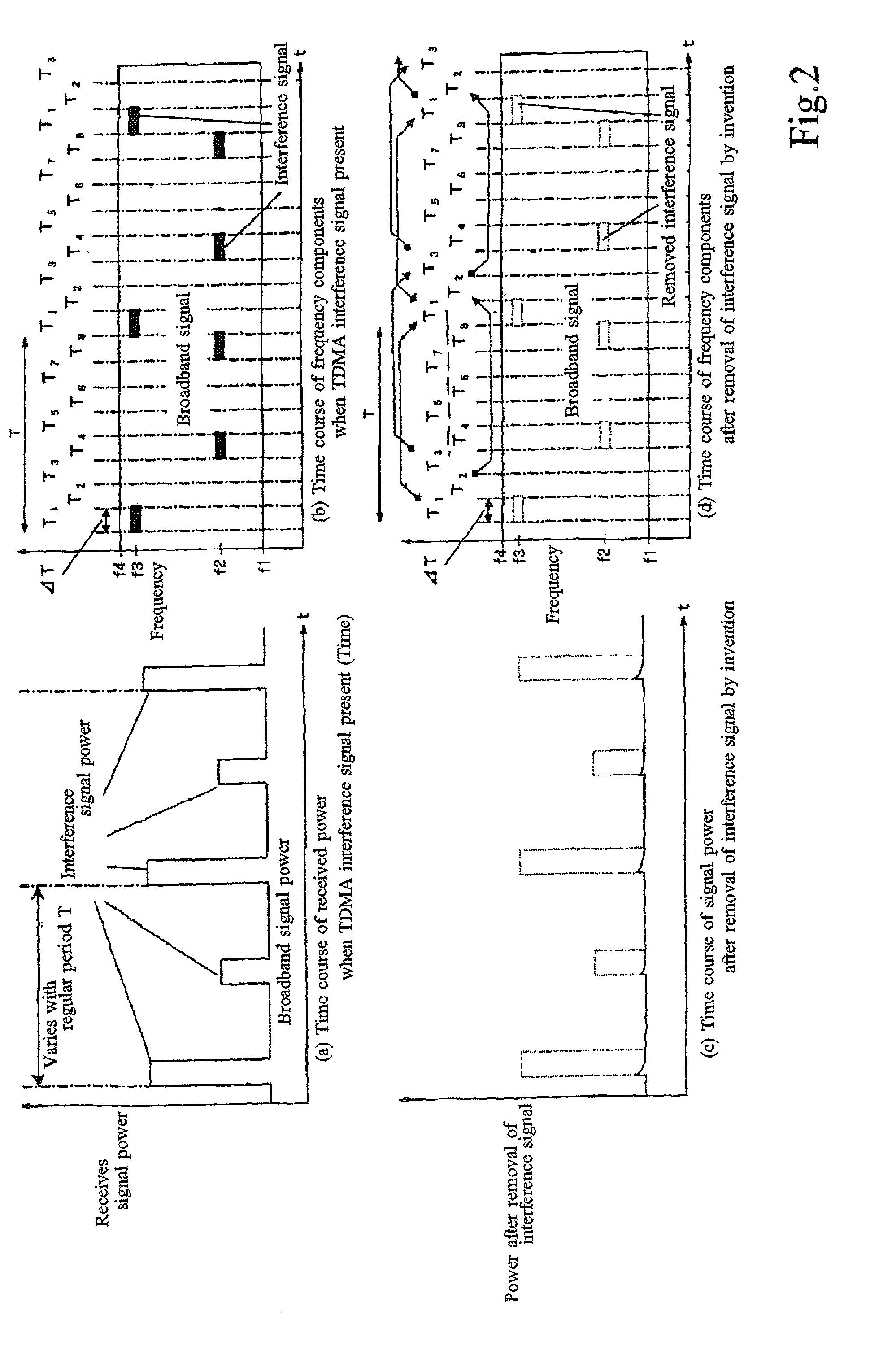Interference signal removal system
a signal removal and interference technology, applied in the field of interference signal removal system, can solve the problems of increasing the probability of dsss signals encountering interference, natural interference between signals, and inability to obtain interference signal suppressing effects, etc., and achieve the effect of high quality processing
- Summary
- Abstract
- Description
- Claims
- Application Information
AI Technical Summary
Benefits of technology
Problems solved by technology
Method used
Image
Examples
second embodiment
[0251]the interference signal removal system according to this invention will now be explained.
[0252]This embodiment will be explained with regard to the case where the present invention is applied to an interference signal removal system that, similarly to the interference signal removal systems taught by Japanese Patent Application Nos. 2000-3284437 and 2000-328740, removes an interference signal from an input signal containing a broadband desired signal and a narrow-band interference signal by extracting the interference signal contained in the input signal while suppressing the amount of the extraction based on the input signal, and removes the extracted interference signal from the input signal.
[0253]FIG. 9 shows an example of the configuration of the second embodiment of the interference signal removal system according to the present invention. The illustrated interference signal removal system is equipped with an interference signal estimator 21, an interference signal extrac...
PUM
 Login to View More
Login to View More Abstract
Description
Claims
Application Information
 Login to View More
Login to View More - R&D
- Intellectual Property
- Life Sciences
- Materials
- Tech Scout
- Unparalleled Data Quality
- Higher Quality Content
- 60% Fewer Hallucinations
Browse by: Latest US Patents, China's latest patents, Technical Efficacy Thesaurus, Application Domain, Technology Topic, Popular Technical Reports.
© 2025 PatSnap. All rights reserved.Legal|Privacy policy|Modern Slavery Act Transparency Statement|Sitemap|About US| Contact US: help@patsnap.com



